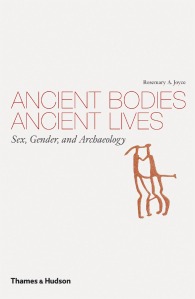An article in the Mexican newspaper La Cronica de Hoy reported last Thursday on a new book being presented in Mexico this week, The Spectacle of the Late Maya Court: Reflections on the Murals of Bonampak. Written by art historians Mary Ellen Miller and Claudia Brittenham, the book builds on a long-term project by Miller using infrared photography to clarify details of the incredibly well-preserved, yet still aged and in some places unclear, murals.
The article in Cronica de Hoy included passing reference to the identification by North American archaeologist and artist Heather Hurst of the image of a young child in the Bonampak murals as that of a girl, not a boy. Citing an interview with Brittenham, the newspaper wrote
Another discovery occurred in the mural painting of Room 1, where it was thought that the motif was the presentation of the heir of Chaan Muan II [the ruler of Bonampak]. But after the reconstruction made by Heather Hurst, it was discovered that it did not concern a boy, but a girl.
“This could be corroborated and after studying her body paint and clothing, it was confirmed that the person is a small girl and not the male heir, the next Maya ruler that we had supposed.”
The murals are in three rooms located in a row, forming a single building at Bonampak, a Classic Maya city at the eastern edge of Chiapas, Mexico. The anthropology museum at Yale University, where Miller is a professor, has an online exhibit listing that explains the history of rediscovery of the murals, and the project to document them using modern research methods, which began in 1995.
It summarizes the visual content in a few short but effective sentences:
Painted around A.D. 800, these three rooms of paintings reveal, in astonishing detail, the ancient Maya at the end of their splendor, engaging in court rituals and human sacrifice, wearing elegant costumes and stripping the clothing from fallen captives, acknowledging foreign nobles and receiving abundant tribute. No other surviving work features so many Maya engaged in the life of the court, whether second-tier warriors presenting captives to the king or the king’s mother pushed to the side by her imperious daughter-in-law.
As that last evocative phrase indicates, Bonampak is one of the Maya sites that offers glimpses of the experiences of women of the ruling family. An online gallery from the Smithsonian Institution’s National Museum of the American Indian includes a detail photograph of a group of women seated on a bench, from the mural in Room 3. It also illustrates a detail from a stone monument showing the ruler of Bonampak being assisted in ritual by a woman, identified as “his wife or mother” in the caption.
In 2011, Péter Bíró of the University of Bonn published a review of inscriptions from Bonampak and the larger site to which it is linked, Yaxchilan, that accompany images of noble women. He commented in particular on Bonampak Stela 2, showing the ruler facing one woman, with another standing behind him. In his analysis, the text of the monument records the marriage of Bonampak’s ruler to a woman from Yaxchilan, which would be consistent with a pattern in which more powerful sites used marriages of children of the royal family to bind less powerful sites as political allies.
Hurst’s identification of the heir in the mural as a girl was described in 2002 in the Yale Alumni Magazine:
Hurst… observed that the heir to the throne depicted in Room 1 has a pattern of face paint that elsewhere in the murals is seen only on females, leading the team to speculate that, as Miller puts it, “the availability of only female heirs may have caused some difficulty for the family and may lie behind the creation” of the paintings.
In his original study of the dynastic sequence of Bonampak, Peter Mathews did not identify any ruler later than the patron of the Bonampak murals, Chaan Muwaan II. As Johan Normark notes, Chaan Muwaan II, who ruled until 792 AD, may have been from a different family than previous rulers of Bonampak.
Scholars have long argued that the child in the murals presented as heir never was able to rule. Had she done so, she would have joined a small group of women who were rulers in their own right. Maya archaeology is not quite, yet, to the point of treating such women and girls as normal, if less common, candidates for absolute power, and so having the sole heir be female is treated as if it must have been a source of instability for ancient Maya kingdoms.
What if, instead, we were to accept these royal women as they seem to have been accepted– as first and foremost members of the ruling family, sometimes taking a second place to male heirs in rules of succession, other times acting as important links between powerful families, and even in a few instances successfully ruling and passing on power to their own successors. We would stop being surprised each time another powerful Maya woman’s tomb is identified.
We might then be in a position to think more critically about the histories of ancient Maya realms not strained through a modern lens in which gender trumps class and status. We might recognize the status some Maya women achieved in ritual practice, destroyed during Spanish colonization.
We might get a bit closer to that “king’s mother pushed to the side by her imperious daughter-in-law”.


oneofhere
November 7, 2013
Nice report about the book on Bonampak. Reading these lines about archeology and the lives of ancient peoples – here the Maya – reminds me of my seminars on Southeast Asian anthropology.